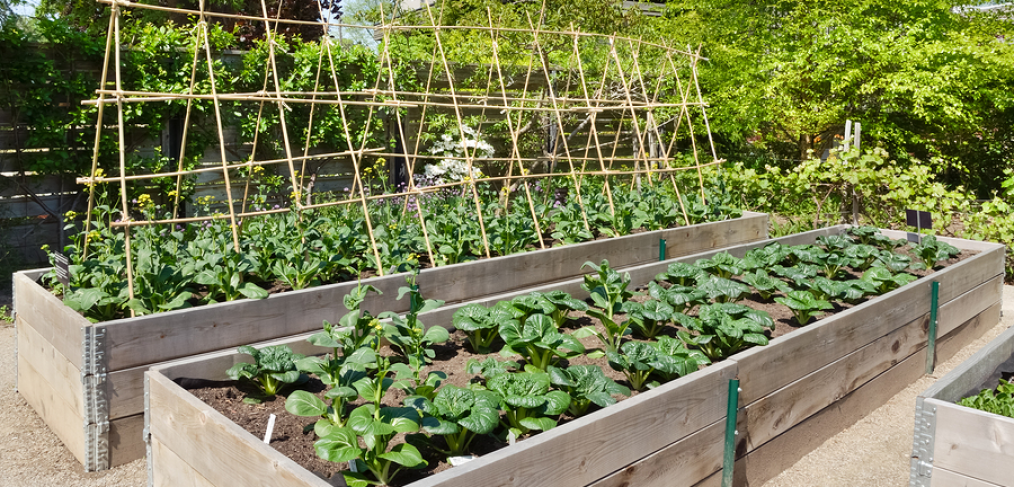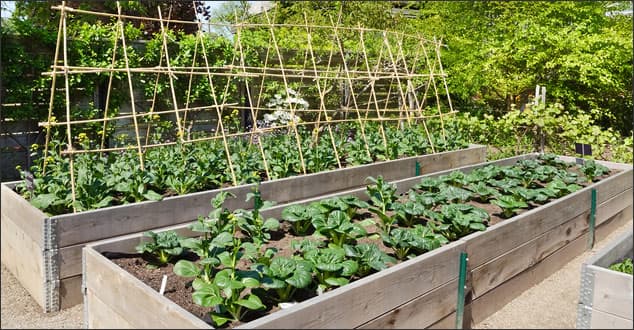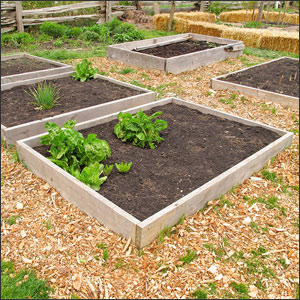
How to Create Your Own Potager Garden Oasis

Many American gardeners probably aren’t familiar with the French potager garden concept. This is especially true for those who grew up in the Midwest where farms are still abundant and land is plentiful.
What is a Potager Garden?
Potager is pronounced po-toe-jay, and it literally means “for the pot.” As with many other French ideas around gardening, eating, and living, the term used to describe this type of gardening doesn’t do justice to the artistry and beauty the French have brought to the craft.
One search on Pinterest or Google Images will reveal a grown-up fairy world of gardening. Even if you are not into gardening, you will be able to see the appeal of these gardens.
The first potagers in France were monastery gardens. They were not meant as functional food production units, but as places of rest, relaxation, and restoration. They were designed as much for the soul as for the stomach. Think English country garden but with vegetables, edible and non-edible flowers, herbs, and fruit.
The French Still Love Potager Gardens
French people still grow as much of their own food as possible. Imagine if as many Americans as French people did that!
The potager is a way to make landscaping and kitchen gardening into one thing. I grew up in the Midwest where we thought of a kitchen garden as a flat plot in the back of your yard – if we thought of having one at all.
For many suburbanites – not to mention city-dwellers – this isn’t an option. Not so with the potager!
Typically, French potager gardens are walled-off or demarcated with fencing, shrubs or walls. However, inside the enclosure, nature is nurtured and not overly manicured.
There is as much concern about the beauty brought by the garden as there is for the edibles it produces. Companion planting is a common practice in the potager garden, as well as allowing for biodiversity. Local plant life is allowed to flourish and fill in the spaces between vegetables, fruit, and flowers.
How To Start Your Own Potager Garden
The French gardening form can become yours. One of the great things about this practice is that it encourages the utilization of space right outside your back or side door.
You can begin, not by tearing out everything you already have, but by carefully considering how and where you can add to what’s already there.

Raised garden bed
Do you have perennial plants and flowers? Great! Where could you fit a few raised beds and some large pots of herbs?
Is there a lot of dead space between plants? Could you remove the mulch and plant some veggies instead?
Next, think about whether some part of the lawn can become garden. Do you really need all that grass?
Before you start inwardly moaning about the idea of spading up a bunch of grass or bringing in a rototiller, consider putting in raised beds and leaving good-sized paths in between.
The bottom line is, keep it simple. Add what you think you can handle for the first year or two. Once you’ve mastered those areas, you can always expand or find ways to add a little bit here and there!
The Grand Potager Garden Vision
Maybe you are more of a big-picture thinker when it comes to gardening. If you are, you probably have a corner you’re already earmarking for your kitchen garden. You have an idea of what you want to grow, eventually, but you thrive on inspiration.
Here are some of the elements typically included in a French potager garden.
First, Set the Unmovable Pieces
Do you want fruit trees or shrubs? Can you borrow a wall from your house? Do you want a fence or a shrub wall? These will be the bones of your potager garden. You do want to pick your location well. Consider factors like how much sun, shade, water and wind your location gets during the days and weeks.
If you can “borrow” one, two or three walls of your house, particularly if those walls are brick, you have just increased the amount of heat available to your garden.
Typically, a brick-wall garden functions at least one “zone” warmer than the ambient climate in your area. If not, a shrub wall still provides protection from prevailing winds. Better yet, plant elderberry shrubs and make it edible!
Second, Choose What’s Beautiful
To some gardeners who crave order most of all, the riotous mass of plants in some potager pictures will not appeal. The great thing is, you decide what’s beautiful. It’s going to be your garden! A layout could come in handy, as could well-defined borders. If straight paths and a geometric design are what’s beautiful to you, then that’s where you’ll want to be.
For those free-spirited gardeners, a word to the wise: the idea of a potager garden is not to let your entire yard become the garden. In fact, French potager blends well with the idea of utilizing all the space available to you. Your garden should be a delight to the senses. You should not design something that will be overwhelming for you because you’ve made it so huge.
All well-designed potager gardens include vertical elements. You can use your wall for climbing beans, sunflowers, corn, or a mix of all three. Or build several structures for climbing plants. Not only do they work well for supporting growing plants, but if you make them attractive, they can be visual design pieces for the winter months.
The last and most important thing you will be going for is creating a visual feast. The potager garden is a kaleidoscope of colors, shapes and textures all mingled together. You want order and whimsy. Barely controlled chaos. Something that feels curated, not controlled. After all, you are in nature. Let nature be nature.
Third, Have a Plan
Remember to plan for harvesting! Above all, you need big enough paths to accommodate a wheelbarrow. And you will be sorry if you don’t have that.
Raised beds are especially useful for this purpose, as they eliminate the danger of compacting soil needed for growing plants. Don’t pack plants so close together that you can’t reach your produce without trampling the flowers!
Remember also that crops can be rotated. One of the most dominant ideas in potager gardening is seasonality. The “soup pot” can be ever-changing based on what’s available and in season. After your main harvest is over, salad greens can be planted again in nooks and crannies. And they can be moved!
Not everything needs to be edible. If you have a flower variety that you like, include it. What’s good for your soul will be good for your table.
Another good tip to remember is that you must contain aggressive plants like mint or tansy in pots, or they will spread and take over the whole garden. Make sure to research which plants go well together, and which don’t, before you plant!
Takeaway
If you are ready to jump on the potager garden bandwagon, it’s never too soon to start making your backdoor your favorite place to be. The only guides you need are your own eyes and your own taste buds!
In conclusion, consider using Root Starter Sticks to ensure your plants have the best chance of survival. Root Starter Sticks are inserted directly into the soil and allows water, nutrients, and air to reach deep into the root zone helping plants to thrive.



